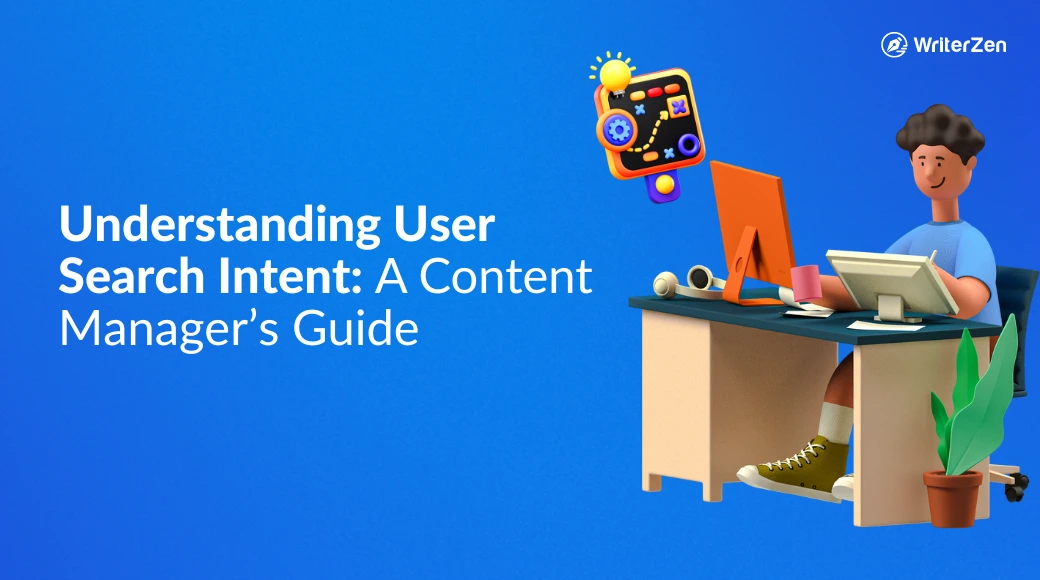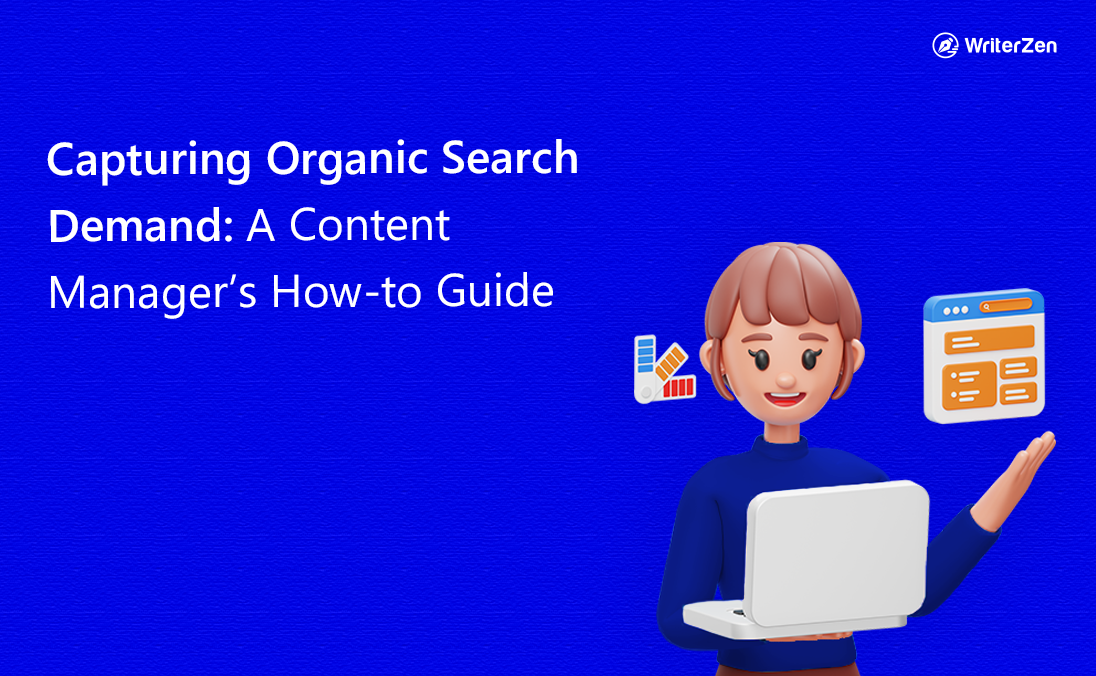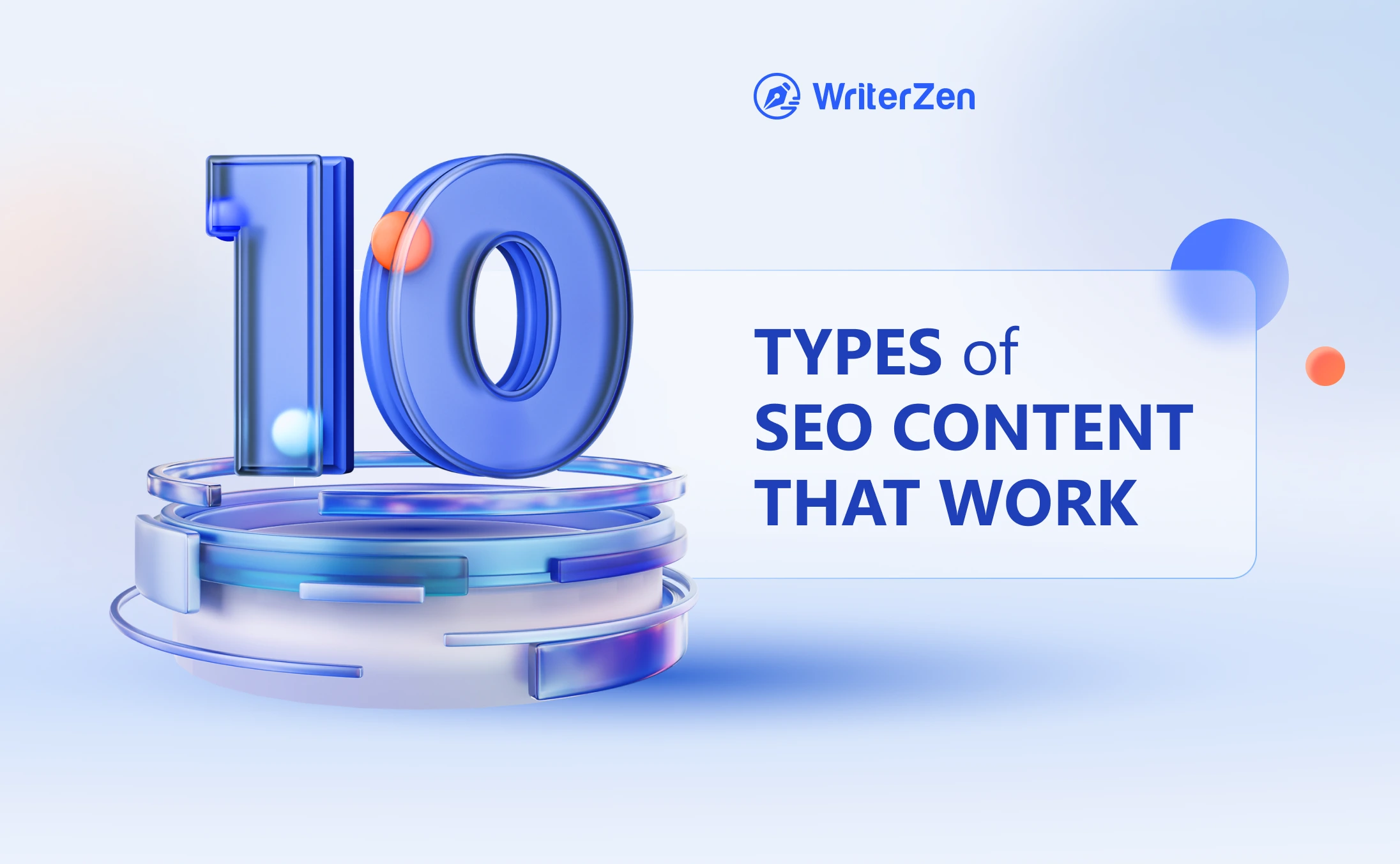The internet is flooded with content. Some are good, some are not, so what makes online content truly stand head and shoulders above the rest?
Is it only the use of effective writing techniques for search engine optimization (SEO) and digital marketing, or is it a combination of elements?
These are the questions we aim to answer in more detail below. Stick around to find out how to jazz up your game in online content marketing and take your content to the next level.
Understanding the Role of Writing Skills in SEO
SEO aims to optimize websites so that they perform well on search engine results pages (SERPs). There are technical SEO requirements that must be met, such as increasing website loading speeds and making them mobile-friendly. However, content really is king when it can draw traffic and conversions.
That’s why strong writing skills are so closely related to SEO. The better the writing, the more enticing the web content will be.
This means you have a better chance of grabbing your audience’s attention and driving them to take an action you’d like them to, be it buying, signing up for something, taking advantage of a sale, or anything in between.
Know Your Audience
Every great SEO content writer out there knows that writing isn’t just about putting words on an empty page and filling it with fluff.
Instead, you need to know your audience so well that you can speak to their demographic characteristics and pain points, as well as the ideal tone of voice that will speak to them directly.
All this requires thorough buyer persona research.
This means that you are more likely to spend more time researching your audience as opposed to writing that flowing social media post, blog article, or email newsletter.
Essential Writing Techniques
Highly effective writing techniques for SEO boil down to three key components: crafting compelling headlines, writing effective body copy, and seamlessly integrating keywords into your content. Let’s explore what each of these means in more detail below.
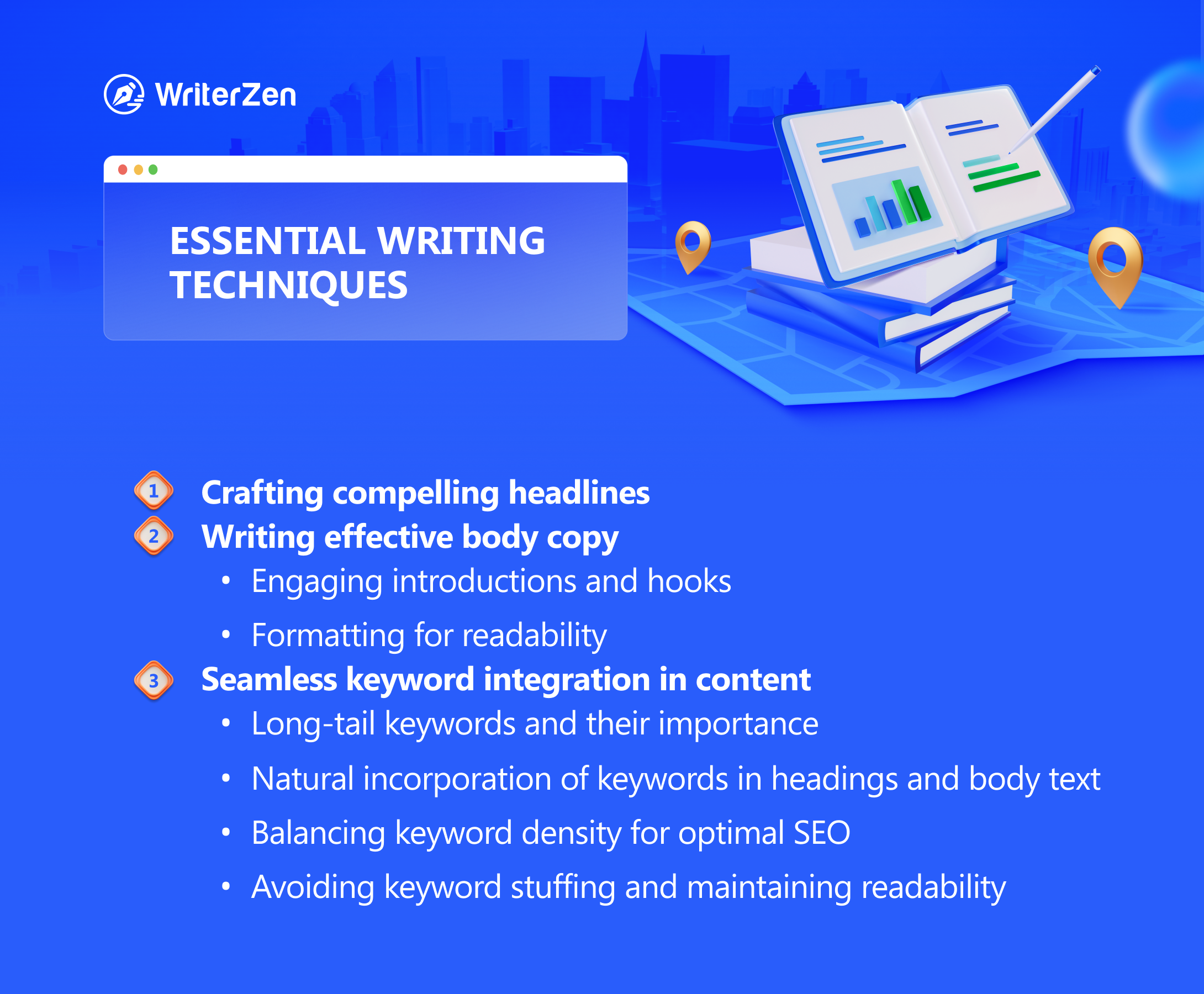
Crafting Compelling Headlines
It’s a no-brainer that headlines must be catchy. But what makes them so? It’s not always about adding an odd number to a listicle such as “19 Cheeky Hacks To Triple the Impact of Your Writing”.
While an odd number of tips usually draws the attention of a reader more quickly than an even number, make sure you don’t overdo it with extensive lists that no one wants to read. Get to the point quickly and stick to it.
Also, when it comes to headlines, you need to show that you are going to answer a query. It may be obvious to say, but writing clickbait headlines that don’t have anything to do with the body copy will increase your bounce rate and your chance of being sidelined by your readers.
To write effective headlines, it’s always a good idea to write several different versions and then tweak them to come up with the best variation.
Testing your headlines is another best practice. You can do this by speaking to colleagues and professionals in the industry and getting their honest feedback and opinions. You can even conduct a survey to access a larger pool of data and go from there.
Remember that the headline is the very first thing your readers see. It needs to be so enticing (but not clickbait-y) that they’re compelled to click and read what you’ve written. Using emotive or powerful words is another best practice to follow.
Writing Effective Body Copy
Now that your headline is out of the way, you’re ready to start writing the body of your content.
This is the longest piece of writing that you will do, and it should always be preceded by thorough research.
You want to present your readers with something unique and original while adding value to their search query.
For this reason, you’ll want to focus on:
-
Engaging introductions and hooks
-
Formatting for readability, and
-
Leveraging the power of storytelling
Let’s explore what each of these means in the context of great SEO writing.
Engaging Introductions and Hooks
An introduction necessarily begins with a hook to draw the reader’s attention, pique their interest, and keep them reading the entire piece from start to finish. Once you’ve got their attention, you need to keep it. But this doesn’t start without a powerful hook. Luckily, there are many different types of writing, which means there are just as many hooks you can use.
Take a look at this opening from our Why We Must Go Back to Human & Basic SEO Principles piece, utilizing the storytelling technique:
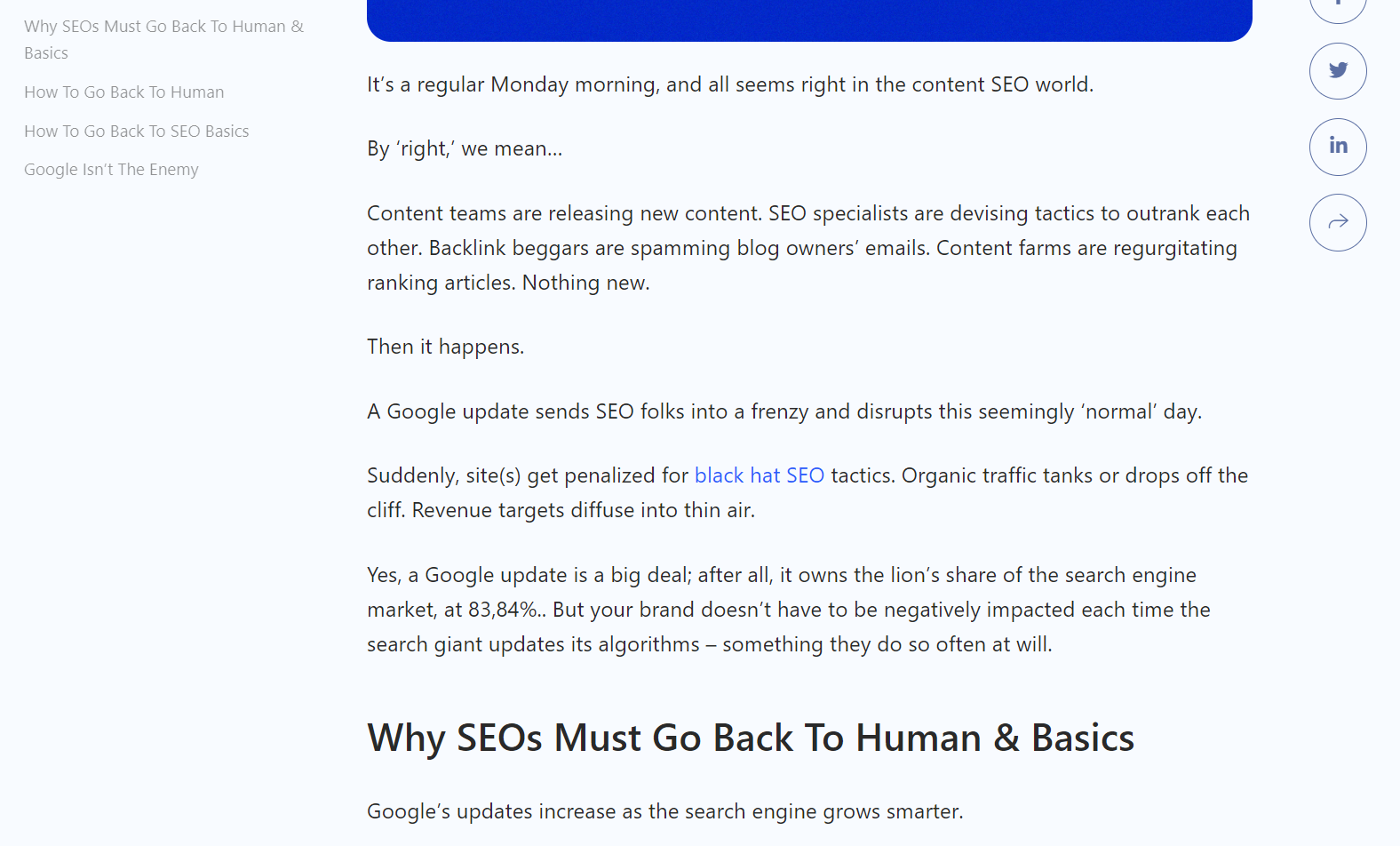
Examples of some other strong hooks you could implement in your content include:
-
Starting with an interesting fact
-
Using a compelling anecdote
-
Beginning your writing with a quote
-
Explaining a common misconception
-
Using data to inform the thesis
-
Telling a joke
-
Asking a question
-
Using a contradictory statement, and
-
Defining a term
Formatting for Readability
Your fingers are typing at the speed of light, and your brilliant ideas are seamlessly conveyed onto your page. While that may be good and well, you need to focus on your formatting for easier readability.
The truth is that many online readers skim content in the “F” pattern. This means you can’t have large chunks of uninterrupted text. You should follow these best practices instead:
Break Content into Digestible Sections
The same rules in academic writing apply to content writing for the web and for SEO: one idea per paragraph.
However, because readers’ attention spans online are much shorter, you should consider writing paragraphs that are no longer than three to five lines long. Anything higher than this, and you’ve lost their attention.
Also, consider adding a Table of Contents to all your articles, so your readers can seamlessly navigate to reach the part of your article that interests them the most. The ease of navigation will help boost their experience with your site, too.
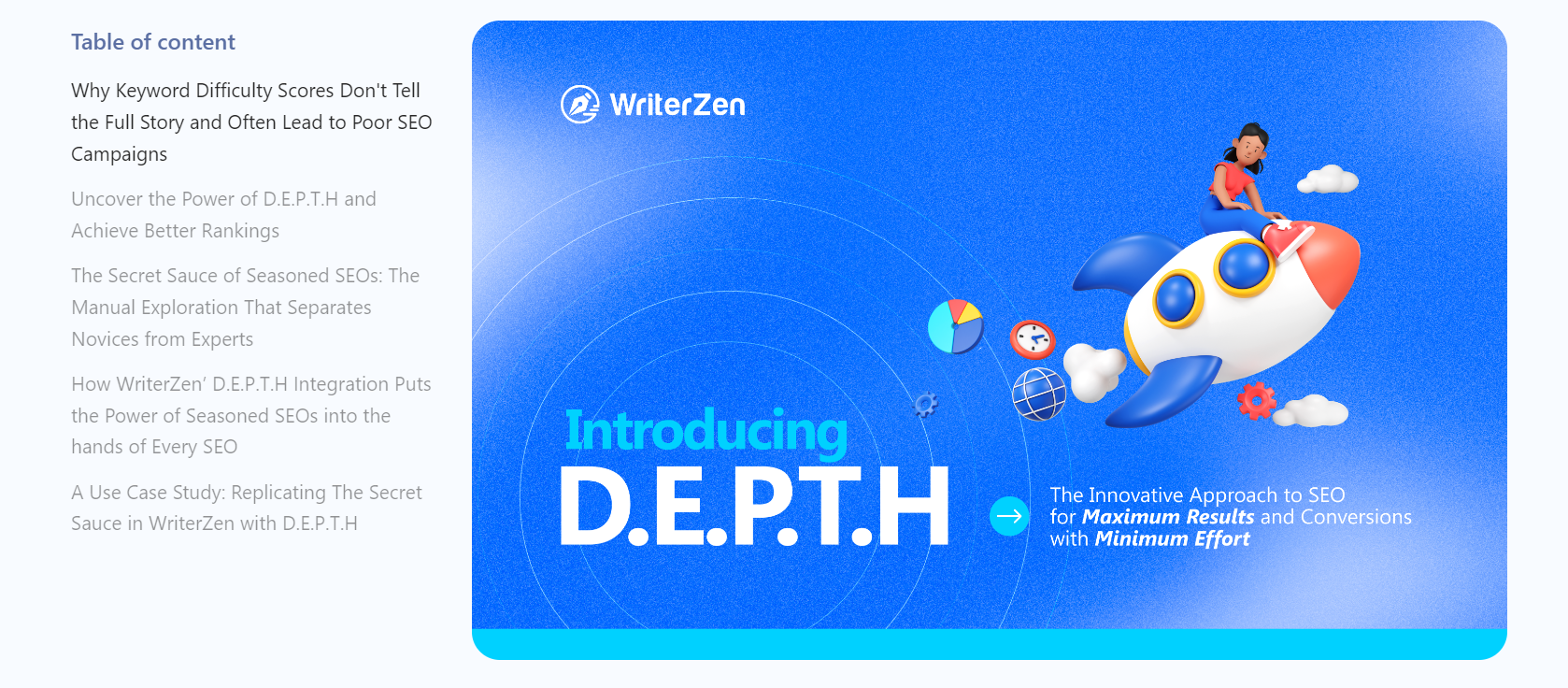
Use Bullet Points, Lists, and Subheadings
Another best practice to implement is to use bullet points, numbered lists, and a solid heading and subheading structure. What does this mean?
Bullet points keep short ideas close together, intact, and easy to read. Numbered lists keep your ideas organized. Meanwhile, your subheading structure ensures uniformity and logical continuity in the ways in which you present your ideas.
Balance Text with Multimedia Elements for an Enhanced User Experience
Finally, when it comes to formatting for readability, you also need to consider the visual elements for an enhanced user experience.
This means that you can and should incorporate images, videos, and infographics where appropriate to break up text and to make your content more engaging for your audience.
Leveraging the Power of Storytelling
Few readers out there enjoy dry content. However, most enjoy emotive, engaging, and uplifting content that speaks directly to their emotions. If you’re wondering about the broad range of emotions you can appeal to, there is an entire “wheel of emotions” created by Robert Plutchik that you can leverage to your advantage.
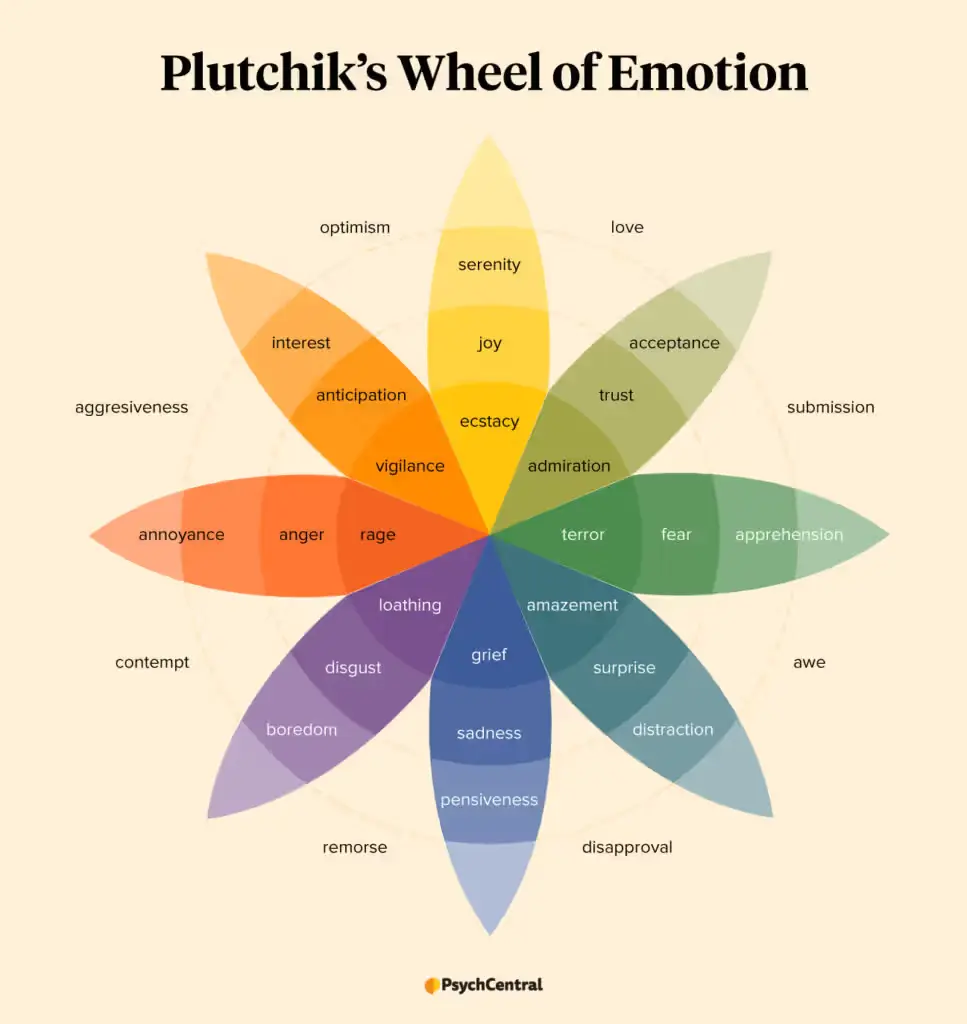
You can press buttons to emphasize your reader’s pain points and speak directly to their needs, you can get them feeling hyped up about an offer, event, or something else, and anything in between. It’s a matter of helping your readers visualize what you are saying and feel an emotional connection with your written word so that they are inspired to take the action you’re leading them to.
Seamless Keyword Integration in Content
SEO specialists carefully study the keywords, search volume, and search intent behind keywords entered into search engines by users. They then compile a list of these keywords to be included in the body of the text.
Unlike days gone by when stuffing multiple similar keywords into paragraphs was the norm, today, Google and other search engines are smarter.
They want users to have a seamless experience when searching for information online, which is achieved through trustworthy information from authoritative sources that are experienced and have the expertise to talk about a given subject.
For this reason, here’s what you should know about keyword integration into content – incorporating effective writing techniques for SEO, such as seamlessly integrating keywords into the content, is crucial for optimizing web pages and attracting organic traffic.
Long-tail Keywords and Their Importance
Because there’s such a growing number of smartphone users worldwide, these devices and other voice assistants make it easier and faster than ever to carry out voice searches.
However, these voice searches tend to sound more natural in terms of language use, are more conversational and casual in nature, and they also contain longer keyword pairings. Hence the name “long-tail keywords”.
If you want to compete for your spot on the SERP, you need to be able to incorporate long-tail keywords into your content flawlessly. Also, because these keywords help content sound more natural as they are specific and targeted, you can benefit from higher conversion rates when incorporating them into your text.
Natural Incorporation of Keywords in Headings and Body Text
While you might get a list of keywords to incorporate into your content, you will most likely have a leading or seed keyword that you’ll need to integrate naturally into your text.
The best rule of thumb is to add your primary keyword in your meta title and description, in your article’s heading, as well as in the first 10% of the article’s introduction. After that, you can incorporate the seed keyword and the supporting keywords naturally in the text.
Balancing Keyword Density for Optimal SEO
Although there’s no agreed-upon figure that says what the best keyword density is, industry best practices suggest that it is around 1% to 2%. This means that a 1,000-word article will have the keyword inserted in every 100 words of the text.
Avoiding Keyword Stuffing and Maintaining Readability
Speaking of keyword density, you definitely don’t want to go overboard with how many times you use your keyword in your article. Doing this is referred to as keyword stuffing, and it seriously affects your readability levels.
This means that your text should sound as natural as possible, with keywords sprinkled gently and naturally into your text without giving the glaring impression that you are forcing keywords in the article. If the keywords sound and seem out of place, they can negatively affect the user’s experience.
Conclusion and Key Takeaways
Starting from your title and working your way through the hook and introduction to the body of your content, there are important principles to consider to writing captivating content:
-
Know your audience inside and out
-
Always aim to answer the search intent
-
Format for readability
-
Leverage the power of storytelling, and
-
Use your keywords intelligently
With these few tips, you’ll be well on your way to writing catchy content that your users love. What is more, you’ll be able to drive actions such as purchases and sign-ups in addition to driving traffic to your website. All in all, writing quality content is a surefire way to ensure your SEO efforts are optimized and complemented as best as possible.




